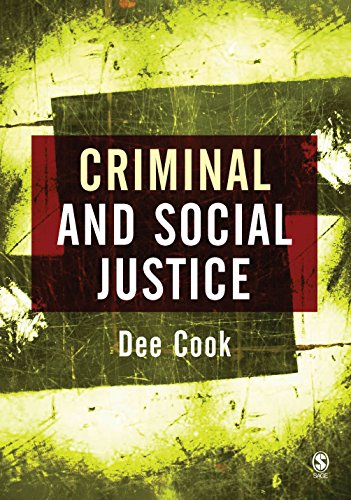Criminal and Social Justice
no information available
See Sample Chapters & Resources to download the Introduction to Criminal and Social Justice "Dee Cook's new book is important, innovative and invigorating. It brings together two spheres - criminal justice and social justice - which are usually, but as she persuades us, unjustifiably kept separate intellectually and in policy and practice. Dee Cook makes a powerful case for the inter-connectedness of penal policy and social policy, bringing together concepts from the two spheres such as social exclusion, citizenship, and human rights. Her innovative approach brings insightful theoretical analysis together with two extended case studies - differential treatment of tax fraud and benefit fraud, and the "third way" politics of New Labour. This book will make it much more difficult for students, policy-makers and criminal justice practitioners to ignore the social context in which penal policy evolves and is implemented." -Barbara Hudson, University of Central Lancashire "This is an accessible and lively critical account of the inter-relationship between social and criminal justice in New Labour Britain. It should engage students on a range of programmes, particularly social policy, criminology and sociology." - Ruth Lister, Loughborough University "A cogent demonstration that criminal justice cannot be achieved in the absence of social justice. There is a blistering but thoroughly informed critique of New Labour's failure to narrow this "justice gap". Let's hope the carefully reasoned but impassioned arguments about how to get really tough on the causes of crime and injustice get the attention they deserve." - Robert Reiner, London School of Economics and Political ScienceCriminal and Social Justice provides an important insight into the relationship between social inequality, crime, and criminalization.In this accessible and innovative account, Dee Cook examines the nature of the relationship between criminal and social justice - both in theory and in practice. Current social, economic, political, and cultural considerations are brought to bear, and contemporary examples are used throughout to help the student to consider this relationship. The book is essential reading for students and researchers in criminology, social policy, social work and sociology. It is also relevant to practitioners in statutory, voluntary and community sector organizations. ... Read more Read less











